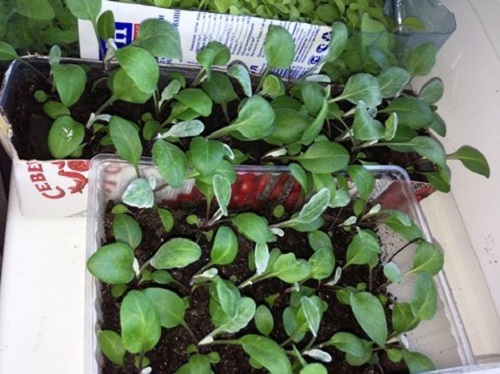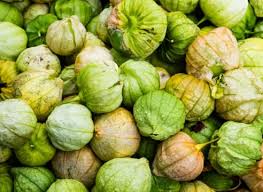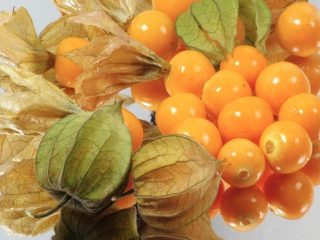Content
Physalis belongs to the nightshade family. Even an inexperienced gardener can grow and care for vegetable physalis. The plant is used both for decorative purposes and for food consumption.
Physalis is a berry or vegetable
Physalis is a herbaceous plant reaching 1.2 m in height. There are perennial and biennial varieties. The main feature is the fruit, which is in an unusual box reminiscent of a Chinese lantern. The capsule consists of sepals that are fused together. When ripe, it changes its color from green to orange or yellow; lilac or white are less common.
The fruit is a berry that resembles a tomato in appearance. When mature, it reaches a yellow or orange color. The pulp is dense and fleshy with small seeds. Taste qualities are varied. Vary from sweet to neutral taste with a hint of bitterness.
Wild representatives of physalis can be found in forests, ravines, on the edges, in the form weed in garden plots.
The species diversity of physalis is represented by the following varieties:
- berry;
- vegetable;
- decorative.
How to distinguish vegetable physalis from berry physalis
Vegetable physalis differs from berry physalis in the larger size of the fruit. Some specimens reach 160 g. The vegetable variety is a spreading plant, reaching a height of 80 to 100 cm. It is a self-pollinating species. Does not require constant care. The berries can be green or orange and look similar to a tomato.
Vegetable physalis is one of the productive varieties. From one bush you can collect 4-6 kg. berries
Features of vegetable physalis
Physalis is unique in its benefits. All its parts have value.
Berries contain the following beneficial components:
- carbohydrates;
- Sahara;
- pectins;
- carotenoids;
- organic acids;
- tannins;
- ascorbic acid;
- macro- and microelements.
The roots contain alkaloids. The seeds contain fatty oil. The leaves are rich in carotenoids, steroids, esters, flavonoids and beneficial acids.
Physalis berries are used as an anti-inflammatory, antiseptic, analgesic, hemostatic, diuretic and choleretic agent.
Decoctions of them are used in the treatment of the following diseases:
- Cystitis.
- Hepatitis.
- Urolithiasis disease.
- Edema.
- Ascites.
- Bronchitis.
- Gout.
- Rheumatism.
Juice from fresh berries is useful in the following cases:
- in the treatment of respiratory diseases;
- dysentery;
- hypertension;
- dermatosis.
A decoction of the roots is used as an analgesic and antitussive.A tea is prepared from the leaves and capsules of the vegetable physalis to treat hypertension.
The caloric content of fruits does not exceed 55 Kcal per 100 g.
How to grow vegetable physalis
Vegetable physalis prefers sunny areas. Tolerates light shade. Grows well in soil not overloaded with fertilizers. Most often it is grown in seedlings, but the seeds can also be sown in open ground.
Landing dates
As a rule, physalis is grown using seedlings. Seeds must be sown in early April. After 45-50 days of care, the seedlings can be planted in open ground. This time falls in the first half of May, when the threat of frost has passed.
Growing Physalis vegetable from seeds
To select the best seeds for growing vegetable physalis, you need to prepare them. To do this, the seeds are placed in a container with a 6% saline solution. Mix everything thoroughly. The seeds that end up at the bottom are the highest quality and best suited for growing. They are thoroughly dried before planting.
The soil on the ridge is dug up several weeks before sowing. Ash and humus are used as top dressing. It is good to grow vegetable physalis in beds after cabbage and cucumbers. Do not use soil in which potatoes, peppers and tomatoes grew.
Physalis is quite resistant to low temperatures. Therefore, for cultivation they use the method of planting before winter. You can sow seeds in early spring in open beds. Young seedlings will be stronger and more robust. But this method of cultivation leads to a late start of fruiting.
Growing by seedling method
To obtain good shoots, Physalis vegetable seeds can be placed in Epin solution for 10-12 hours. For planting and care, use ready-made soil or prepare it yourself. The soil should be fertile and light.
The seeds are planted in small containers with soil and watered. At a temperature of 16-21 degrees and careful care, seedlings appear in 7-8 days. As soon as 2-3 full-fledged leaves appear on the sprouts, they are picked into separate pots.
Before planting seedlings in open ground, it is necessary to harden them. To do this, you can take the seedlings outside, gradually increasing the time they spend in the open air. As soon as the temperature reaches 15 degrees, the seedlings are left overnight.
With proper care, fertilizers for young seedlings are applied no more than once every 2 weeks. Liquid fertilizer is watered only at the root of the plant.
When the vegetable physalis forms 6-7 leaves, it is planted in open ground. So that when growing the bushes do not interfere or shade each other, they are arranged in a checkerboard pattern. For better care, the distance between seedlings should be at least 60 cm. When growing tall varieties, additional support is used.
Rules of care
Care when growing vegetable physalis consists of timely watering and removal of weeds. If you mulch when planting seedlings, then loosening and other maintenance procedures will have to be carried out much less frequently. Before the crop ripens, watering is reduced to a minimum. This will help prevent cracks in the fruit.
With more careful care, fertilizers are applied no more than once every 2-3 weeks. You can use mullein infusion at a rate of 1 to 10 or other organic fertilizers.
Reproduction
Vegetable physalis grows very quickly with the help of a powerful root system. Therefore, when growing it, special limiters are often used.
The easiest way to propagate is to dig up young shoots with roots. Cuttings are also used for these purposes. The procedure is best carried out at the end of July. Cut off the top of the shoot with 3 formed internodes. The cutting is half placed in the prepared soil and moistened. For faster rooting, seedlings are covered with film. On hot days they require special care. They need to be shaded and watered more often. As soon as the shoot is completely strong and rooted, the shelter can be removed.
Diseases and pests
Vegetable physalis can be susceptible to the following diseases:
- mosaic - refers to viral diseases. Affects leaves. Dark or light green spots and growths appear on them. Berries on diseased bushes become small and ripen poorly. To combat the virus, 10% whey infusion with microfertilizers is used;
- penicillosis – is formed on damaged areas of fruits, which makes them unsuitable for use. For care and prevention, it is recommended to treat the plant several times with a weak solution of potassium permanganate;
- white rot – white coating on leaves, fruits and stems. Affected plants are sprayed with drugs such as Profit, Ridomil, Bordeaux mixture, copper oxychloride, Kartotsid;
- gray rot – brown spots on the top of the shoots. Treated with Profit, Ridomil, Bordeaux mixture, Copper Oxychloride, Cartocid;
- fusarium – drilling and wilting of the plant occurs. The infected bush is dug up and removed along with a lump of soil;
- late blight – brown spots on the leaves. Treated with Profit, Ridomil, Bordeaux mixture, Copper Oxychloride, Cartocid.
Very often, when growing vegetable physalis bushes, slugs appear. These mollusks can severely damage the green part of the plant. They must be removed promptly. It is recommended to sprinkle the paths between the ridges with superphosphate or tobacco dust.
Harvesting
With proper care, the lower berries of the vegetable physalis ripen first. They may crumble, but this does not affect their taste. They are collected and used for their intended purpose.
The fruits can be picked unripe and left until fully ripe. For long-term preservation of the crop, it is necessary to put it in a dark place with a temperature of no more than +5 degrees.
The collection is carried out before the onset of cold weather, in dry weather. For long-term storage of the crop, the fruits are picked along with the capsule. The waxy coating protects the berry from damage.
The degree of ripening of vegetable physalis can be determined by the cover. When it begins to dry out and change color, you can prepare for harvesting.
Very often, by the end of September there are still a lot of unripe fruits on the bushes. You can dig up the plant and hang it in the utility room until they are fully ripe.
Use in cooking
A waxy coating forms on the fruits of the vegetable variety. To remove it, the berries are treated with boiling water for 5 minutes. After this, they can be used both fresh and cooked. Use for pickling, salting and soaking. Berries are added to various salads, sauces, caviar and casseroles.They are also suitable as an independent side dish for dishes. The fruits will enrich the taste of any soups. Juice is an unusual ingredient for fish sauce.
Conclusion
Growing and caring for vegetable physalis is not particularly difficult. The culture is undemanding to soil and watering. It is characterized by high yield and disease resistance. The unusual taste of the fruit will add variety to prepared dishes.
















